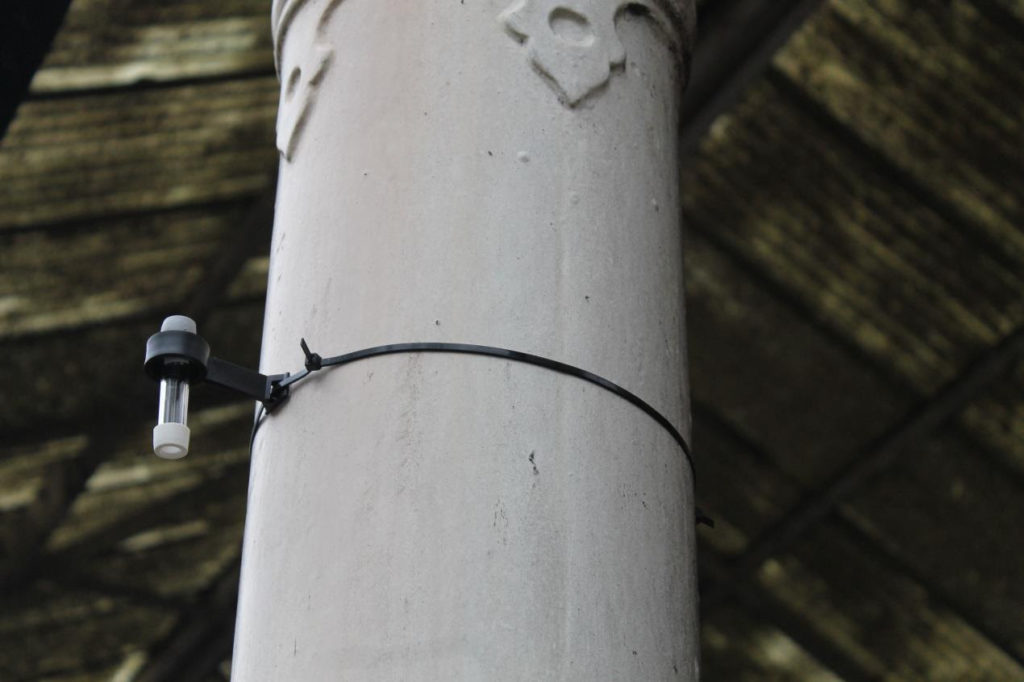Five stations on the Greater Anglia network have become part of a national study aimed at measuring air quality on the railway.
Monitoring commenced at Cambridge, Ely, Ipswich, Norwich and Stansted Airport stations this week and will join 100 other stations across the country in contributing to the Stations Air Quality Monitoring Network, organised by the Rail Safety and Standards Board (RSSB) and funded by the Department of Transport.
It is intended that the study will provide information on the current state of air quality in stations across the rail network and provide location specific air quality data which will help to inform the public about air quality at train stations.
The study will help to determine baseline air quality levels, which can then be used to prioritise improvements if necessary, and will also assess how effective measures are to minimise pollution and improve air quality at train stations.
‘Diffusion tubes’ will be placed around each station to measure the levels of the pollutant nitrogen oxide.
The use of diffusion tubes to monitor ambient air quality is a well-established way to determine long-term pollution concentration levels.

The tubes will be placed at different areas around the station and will be changed each month and analysed over a two year period, with a review after the first year.
Greater Anglia’s Energy and Environment Manager, Steph Evans, said, “I’m pleased that Greater Anglia is involved in this study and that we will be able to gain a greater understanding of air quality at some of our stations so that we can ensure they are clean, healthy places to wait.
“Thanks to our new bi-mode trains, we are already improving air quality at our stations because these trains can switch from diesel to electric power when they are waiting at a station if overhead wires are available. This means they do not have to idle their engines in order to keep the lights and heating on, as they can take power from the station’s overhead power lines instead.
“The Stations Air Quality Monitoring Network is the first of its kind for GB rail and we look forward to seeing the RSSB’s report and baseline data to find out how we are performing and if there is anything we can do to improve air quality.”
Aside from walking and cycling, travelling by train is the most environmentally friendly form of transport and any findings from this study will help the rail industry to understand whether any improvements can be made to reduce the environmental impact of rail travel even further, as well as how other factors, such as bus and taxi traffic outside of the station which could contribute to air pollution.
Greater Anglia recently joined with Network Rail and the region’s Community Rail Partnerships to improve air quality at towns and villages across its network by asking car drivers to switch off their engines when waiting at level crossings.
Last year, Greater Anglia reduced its total carbon emissions by 11%, for scope 1 and 2 emissions, for the second year running and, thanks to new energy management systems installed at stations, recently saved more than 1000 tonnes of carbon dioxide equivalent from being emitted into the atmosphere.

RSSB Air Quality Specialist, Philbert Chan said: “We have to ensure air quality is at an acceptable level to protect passenger and workers health.
“This is the first large-scale organised air quality monitoring campaign on the railway network, using state-of-the-art equipment, to ensure data obtained is as robust and reliable as possible.
“RSSB’s analysis of the data collected will provide valuable information on air pollution, at stations across the country, allowing action to be taken to improve air quality where necessary”
Photo credits: Greater Anglia

